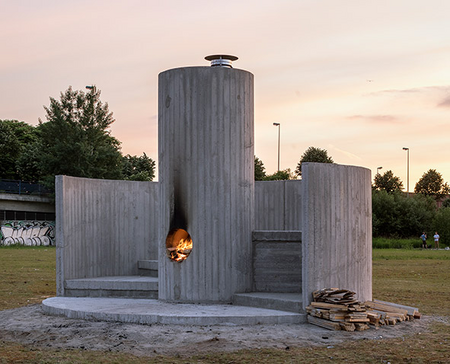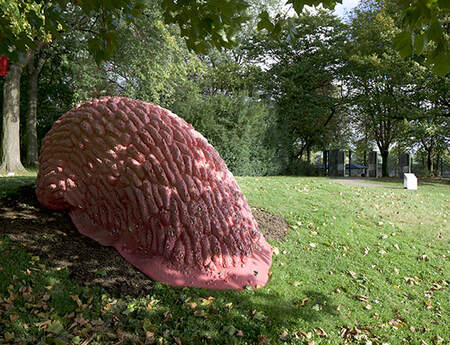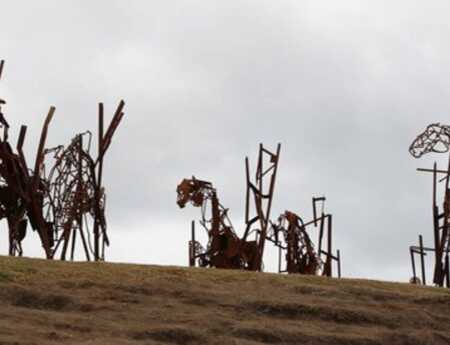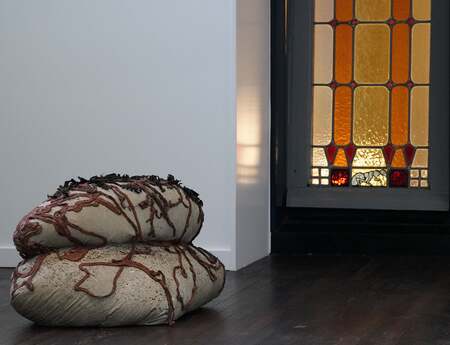Skulptur Projekte conclusions
“It is essential to keep the Skulptur Projekte from being appropriated by politics”
Kasper König, Skulptur Projekte director, declared “My chief concern now is to ensure the exhibition’s independence. I would suggest that if the Skulptur Projekte event is held again, financial autonomy should be secured (…). And I also suggest having it in eleven years – and not during another nerve-racking ‘super art summer’.”
35 artworks in public areas have changed the face of the city of Münster for 16 weeks. The fifth edition of Skulptur Projekte was the best-attended yet, with a total of around 650,000 visitors from 72 nations, an increase of about 11.5% over the 2007 edition. From the point of view of the Skulptur Projekte, the maximum visitor capacity has been reached in terms of what the exhibition infrastructure in particular, and the urban space in general, can accommodate.
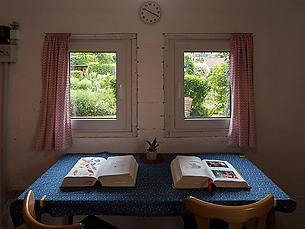
Brita Peters, Co-curator of the exhibition concluded, “The works (…) brought about an interesting friction between materiality, boundary dissolution, and transience that lent itself very well to analogy with the meaning of experience – both subjective and collective – in an age of increasing digitalization. The classical concept of sculpture no longer came to bear as much as it had in the past – a circumstance that mirrors our spirited, volatile, and uncertain times.”
In the 116 days of the exhibition, a number of works changed significantly. In some cases they developed far beyond their initial concept, in others cases they initiated a social debate around the topics of art formats, the public realm and social conflicts.
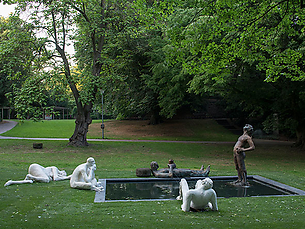
Oscar Tuazon’s Burn the Formwork, which served as a public fireplace, shows unmistakable signs of use: soot and graffiti have given the once light-coloured concrete a patina that almost amounts to a reconception of the work. In collaboration with the Japanese kabuki dancer Toyohiko Fujim, Gintersdorfer/Klassen can be credited with inventing a new theatre format from the spirit of the exhibition.
Michael Smith’s contribution will also leave visible traces behind – every day, about 250 people had souvenirs tattooed in his temporary tattoo studio. The fact that the images were based on drawings by Skulptur Projekte artists from the years between 1977 and 2017 added an archival dimension to the work.
In a different way, the vandalism of Nicole Eisenman’s Sketch for a Fountain created social conflict. One of the figures’ head was cut off in early summer. In September the work was spray-painted in blue with a swastika among other signs. Despite the fact that Skulptur Projekte is conceived as a temporary exhibition format, a selection of works will remain in the urban space of Münster as part of the “Public Collection”. But as of today, it has not yet been decided which projects will stay. However locals have already initiated a money raising campaign to install Eisenman’s work permanently.
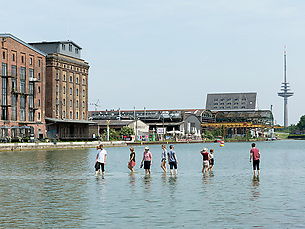
Marianne Wagner, co-curator of Skulptur Projekte 2017 said: “One conspicuous aspect of the 2017 edition was its examination of questions pertaining to the public domain and ‘common ground’. The Skulptur Projekte concept, context and rhythm offer artists conditions for their work that are unique in the realm of major, large-scale exhibitions. For the future, it is therefore my wish that Skulptur Projekte can continue to provide this framework for artistic production, and that the format is not appropriated by various interest groups. It is essential that the exhibition remains a platform for socially relevant issues. This is also quite evident in the Skulptur Projekte Archive, where the format’s significance becomes apparent in regard to the past, present and future.”
A group of 48 participants from nine different countries visited Skulptur Projekte 2017 in July, on a trip organized by sculpture network. The visit was guided by Hartmut Stielow, sculptor and co-founder of sculpture network, and Judith Collins, former chief curator of the Tate Modern London and sculpture network board member.
Skulptur Projekte 2017
Münster, Germany
www.skulptur-projekte.de
www.sculpture-network.org
